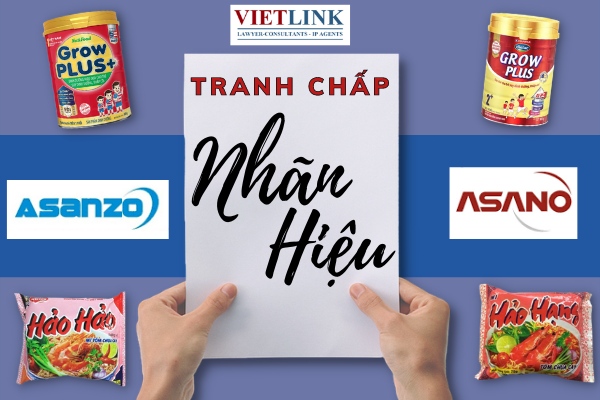Trademark disputes and solutions


Trademark disputes and solutions
Trademark disputes are conflicts, disagreements and conflicts of rights and interests between two or more parties related to one or more registered trademarks in which the parties believe that the mark belongs to own rights and the use of the other party’s trademark has affected their legitimate rights and interests.
Common types of trademark disputes
– Firstly, disputes may arise during the search and registration of trademark protection.
Disputes in the process of establishing rights to trademarks often arise when there are many identical or similar marks with the same application for protection, or on the basis of a third party’s application against the registration office. signing to establish IP rights on opposition to the application, termination or invalidation of a protection title of another mark as prescribed by law.
– Second, disputes arising in the process of exploitation and use; often due to unfair competition.
This is the most common type of trademark dispute in practice and is also much more complicated than the dispute in the stage of establishing rights. Usually, a dispute in the course of using a trademark occurs when there is an infringement of the exclusive right established for that mark without the permission of the trademark owner or any licensor. .
Trademark Dispute Resolution Methods
– Settlement of trademark disputes by means of conciliation and negotiation: When being infringed on the rights and interests of its registered trademark, the infringing party has the right to request the infringing party to terminate the trademark. stop violations and compensate for damage caused by violations.
The method of conciliation and negotiation is simple, effective, fast, convenient, and inexpensive for the parties. The parties to a dispute can also protect their own reputation and protect business secrets. However, enforcement is not guaranteed by the mandatory mechanism, so it may not give the desired results.
– To settle trademark disputes by initiating lawsuits in court when the two parties cannot negotiate a settlement, the infringing party has the right to sue the infringing party to the Court according to the civil procedure law.
For this method, the decision is obligatory by the parties, otherwise enforcement will be enforced. Therefore, the problem of stopping violations will be solved almost completely. However, it is time consuming and costly. Court decisions are often appealed, leading to prolonged or even delayed proceedings, greatly affecting businesses.
Procedure for filing a lawsuit:
Step 1: Prepare the petition file
– The petitioner prepares a lawsuit petition, the contents of the lawsuit petition must contain the contents specified in Article 164 of the Civil Procedure Code.
– Documents attached to the petition (evidence to prove that your claim is grounded and lawful).
Evidence to prove the right holder (protection title, national register of industrial property). Evidence evidencing infringement of rights, such as: descriptive documents, related specimens and artifacts representing the protected object; samples, related artifacts, photos and video recordings of products; explanation and comparison between the product under consideration and the protected object; minutes, testimonies, other documents to prove infringement and written conclusions on intellectual property assessment (if any).
Step 2: File a lawsuit at the Court
Step 3: The court considers and accepts the settlement
Within five working days after receiving the lawsuit petition, the Court must consider and issue one of the following decisions:
– To accept the case if the case falls under its handling competence;
– If the lawsuit is not under the jurisdiction of the Court, the lawsuit petition must be transferred to the competent Court and notified to the petitioner.
In addition, the trademark owner has the right to request the Court to apply provisional urgent measures in the following cases:
- There is a danger of irreparable damage to the intellectual property right holder;
- Goods suspected of infringing upon intellectual property rights or evidence related to acts of infringing upon intellectual property rights are at risk of being dispersed or destroyed if not promptly protected.
- Temporary emergency measures applied to suspected trademark infringing goods include:
- Seizure;
- Distraint;
- Seal; prohibit changes to the status quo; movement is prohibited;
- Prohibit transfer of ownership.
Please contact us immediately for advice:
================
Vieltink Law Firm
▪ Address: P203 Giang Vo Lake View Building, D10 Giang Vo, Ba Dinh District, Hanoi
▪ Hotline: 0914.929.086
▪ Email: hanoi@vietlinklaw.com
▪ Website: vietlinklaw.com




